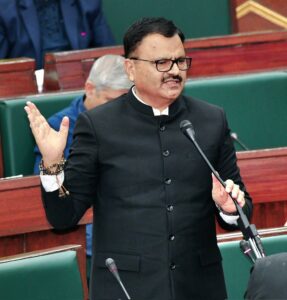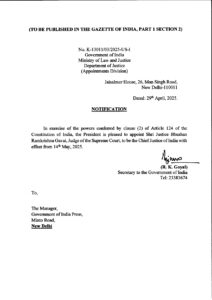Ongoing wet spell in the Kashmir brings rainfall deficit down to 42 pc
Srinagar, Feb 28 (PTI) The ongoing wet spell in the Kashmir Valley due to a “mega” western disturbance has brought a major relief for Jammu and Kashmir residents, bringing down the rainfall deficit from 80 per cent to 42 per cent, officials said on Friday.
According to the local weather office, the Valley witnessed above-normal precipitation between February 26 and 28.
“While the normal precipitation for the period would have been 15.5 mm, Jammu and Kashmir has witnessed 78.4 mm precipitation which is 407 per cent above the normal,” a weather department official said.
“The current wet spell has brought the deficit down from 80 per cent to nearly 42 per cent,” he said.
Udhampur in the Jammu region received 1,891 per cent above-normal precipitation, while it was 511 per cent more than what is normal for this time of the year in the Kashmir Valley’s Ganderbal.
The IMD official said that for the months of January and February, the normal precipitation was 225.4 mm but the actual precipitation for the two months was 131.5 mm, a deficit of 42 per cent.
This is an improvement from the deficit of over 80 per cent, he said.
At 69 per cent, Kulgam is the most precipitation-deficit district in Jammu and Kashmir while Samba has a zero per cent deficit.
Weather experts said the wet spell has been brought by a “mega” western disturbance that Jammu and Kashmir needed badly. “Although the dry weather situation cannot be reversed, this spell has improved the situation,” said Faizan Arif, a weather expert.
He, however, said this does not change the bigger picture as the looming threat of climate change remains as urgent as ever.
“Immediate action is crucial. Strong policies addressing climate challenges and climate adaptation must be implemented without delay. This is not just important, it is the defining issue of our time.
“Investing in climate action now will pay off in the long run. The costs of disasters, compensation, and recovery will far exceed the expenses of proactive measures. By acting early, governments can ultimately save millions/billions while protecting lives and livelihoods,” he added.
Apprehensions of a drought had increased among the people in Jammu and Kashmir as the Union territory experienced its driest year in five decades in 2024 with below-normal precipitation continuing for the fifth consecutive year.
Several water bodies were lowing below the zero level mark while some springs in south Kashmir had dried up completely due to the receding water table.
In 2024, the rainfall levels plunged to 870.9 mm against the normal annual average of 1,232.3 mm. The previous year recorded 1,146.6 mm rainfall level which was seven per cent below the normal precipitation.
The deficit had led to a concern in the government with Chief Minister Omar Abdullah calling for a more proactive approach and collective efforts towards water management and conservation.
Earlier this month, Abdullah warned people that Jammu and Kashmir has been staring at water crisis.
“It’s not a recent phenomenon. Actually, it’s been building up for a few years now. While the government will have to adopt a more proactive approach towards water management and conservation, it can’t just be a government-centric approach. All of us will have to change the way we take water for granted,” Abdullah had said on X.






